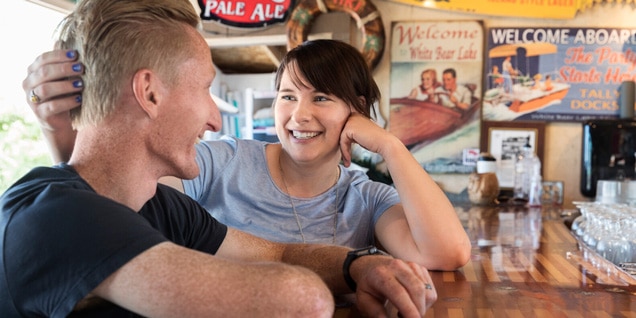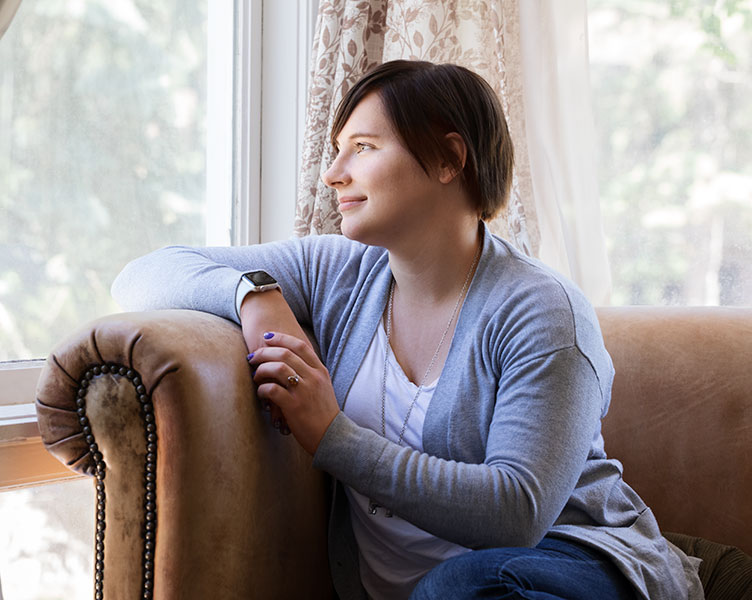There are many different types of treatment available for all kinds of bowel issues. If you are living with constipation or various forms of faecal incontinence, know that you do not have to deal with this alone. Treatments do exist.
An overview of bowel treatments1
When living with a bowel issue, treatments may include:
- Dietary modifications and lifestyle changes1. This can help improve your overall health, and in doing so, improve your bowel symptoms. Your diet may be assessed to see whether certain foods cause issues, as well as how food can affect your stool consistency.
- Medications, such as laxatives or stool softeners1. These drugs can help to reduce symptoms associated with both incontinence and constipation.
- The use of medical devices1. These may be used either to help you train your bowel function and regain bowel control naturally or used to help manage your symptoms.
- Surgery1. Various surgeries may be discussed in later stages of treatment if prior treatments have not provided sufficient relief from your bowel issues.
Treatment options that are least invasive will commonly be explored first, and there are many options to explore to help find relief before surgery becomes a consideration.

How does the process work?
Your GP may refer you to a specialist to explore certain treatment options. Gastroenterologists, colorectal surgeons, and other specialised clinicians have the necessary expertise to diagnose and treat gastrointestinal conditions.
Sometimes, finding the right solution can take some time, and it is important not to be disheartened if your symptoms do not lessen immediately. Try to remain patient throughout the process as you work closely with your healthcare team to find the best approach for your specific situation.
Treatments for bowel disorders
The following explains the different treatment options that may be explored, starting from the most conservative. Conservative bowel management options are reversible, meaning that it is possible to stop the treatment or try an alternative. Further invasive treatments will only be considered when alternative solutions have been exhausted or fail to bring relief.
Diet and lifestyle changes
We all know that eating well and staying active are known to positively impact our health, but adjusting your diet and routines can also provide some relief from bowel issues1. A balanced, fibre-rich diet can help to regulate bowel movements and stool consistency. A healthy diet may be adjusted over time to see desired results.
When talking about diet, don’t think only about food – hydration is also important for your bowel health. Simple tips to ensure you drink enough can include:
- Always have a drink with food
- Carry a water bottle with you throughout the day
- Whenever you finish your glass or bottle, refill it immediately
- Add flavour to your water
- Include fruits and vegetables with a high-water content on your grocery list
Engaging in regular exercise is another way to promote better overall bowel health. Your healthcare professional will be able to guide you on what level of activity is appropriate for you.

Medications
Medications can regulate bowel function1, targeting issues like constipation or irregular movements. Constipating agents like loperamide can prevent incontinence, while laxatives (bulk-forming, osmotic, stimulant, and lubricant) can alleviate constipation. Follow prescribed dosages closely.
Suppositories
Suppositories may also be suggested as treatment1, these are small round or cone-shaped tablets you insert up your bottom where they release their medication.
Mini enemas
Mini enemas may also be considered as a method to alleviate constipation or facilitate evacuation1. With a mini enema, a small tube is inserted, and a stool softening fluid is squeezed into the rectum.
Digital Stimulation/Evacuation
This technique involves inserting a lubricated finger into the anus and rotating it to stimulate stool movement and initiate defecation1. It can be done at home or by a healthcare professional in some situations.
Biofeedback
This experimental treatment may be accessible in certain cases. It involves assessing and training rectal muscle strength. Under professional guidance, you'll learn to squeeze the muscles around a rectal plug, guided by a computer display. The goal is to strengthen pelvic floor muscles, retrain rectal sensation, and coordinate pelvic floor movements during evacuation. This enhances voluntary bowel control, reducing constipation and faecal incontinence1. Kegel exercises at home may complement this therapy.
Transanal Irrigation (TAI)
Transanal irrigation1 involves introducing body-temperature water into the colon via the rectum with a soft and flexible catheter. This can help you to empty your bowel and remain continent between irrigations. It can offer relief from chronic constipation and incontinence and should be used consistently. Prior to starting, thorough examination and training by a clinician are necessary to ensure safety.

Surgical options
In more severe cases, some surgical options1 may be explored.
Sacral nerve stimulation may be an accessible treatment for some and involves surgically implanting electrodes on nerve roots in the sacral region to help modulate bowel functions. This treatment is particularly used to treat faecal incontinence.
A Malone antegrade colonic enema (MACE) is another surgical option where a small opening in the abdomen is made to flush liquid through the bowel, promoting bowel movements. This procedure would then be performed regularly to help prevent constipation and incontinence.
Sacral anterior root stimulation may sometimes be explored. This surgical treatment involves implanting a device over the sacral anterior root of the spinal cord to correct communication between the bowel and brain. This can modify bowel behaviour and is mainly used for patients with spinal cord injuries.
Stoma surgery may also be an option. This involves diverting a portion of the bowel out through the abdomen, where the output is then collected in a stoma bag. Although invasive, stoma surgery can provide life-changing relief.
Key takeaways:
Your bowel health matters, and it is important you get the treatment you need to best manage your bowel issues.
- Treatments exist for many types of bowel issues, including both constipation and incontinence
- It can take time to find the appropriate treatment for your bowel issues
- Treatments range from diet and lifestyle modifications up to surgical procedures
- Conservative treatments are usually explored first
- Surgical procedures are considered only after other treatments have been explored.
- Magnuson FS, Christensen P, Krassioukov A, et al. Neurogenic Bowel Dysfunction in Patients with Spinal Cord Injury and Multiple Sclerosis—An Updated and Simplified Treatment Algorithm. Journal of Clinical Medicine. 2023;12(6971).



